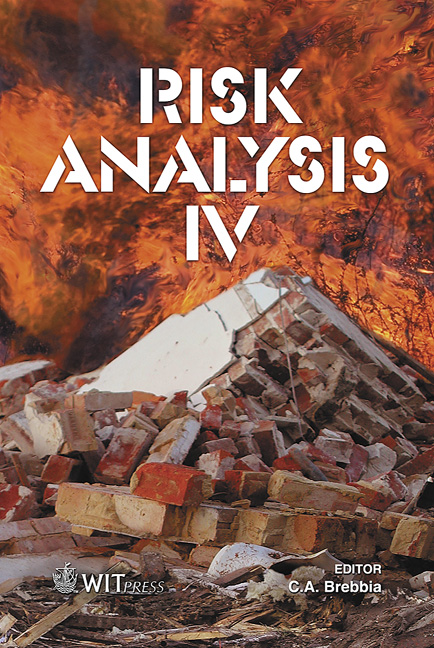Modeling Current Traffic Load, Safety Evaluation And SFE Analysis Of Four Bridges In China
Price
Free (open access)
Transaction
Volume
77
Pages
11
Published
2004
Size
632 kb
Paper DOI
10.2495/RISK040351
Copyright
WIT Press
Author(s)
Q. Quan
Abstract
Many bridges in China are working under overloading with structural deterioration and there is an urgent need to evaluate current load-carrying capacity. The bridges discussed have carried coal trucks 2.5 times as large as the design load for many years. Statistics based on acquired traffic load data over 2.5 months showed that the vehicle load has a 2 peak distribution density. Traditional unimodal probability distributions cannot describe the current vehicle loads appropriately. A bi-modal distribution, with two peaks, consisting of a weighted sum of two normal probability distributions to describe different vehicle loads is developed according to the data. A filtered composite Poisson process and a filtered composite Erlang renewal process are established to describe the vehicle load processes consisting of both overloaded and normal vehicles for the dense and normal traffic states, respectively. Finally, 0.95 fractile of maximum distributions of these vehicle loads in a 20-year residual life period for existing bridges on the national highway are used as their evaluation loads. This paper also discusses requirements on finite element models of complete bridges for the evaluation to represent actual load-carrying capacity. Both 8 node hexahedron and 4 node tetrahedron elements were used in the paper to build analytical models in order to evaluate their potential load-carrying capacity. This paper also discusses how to select element models and grids. Evaluation results showed that only one bridge among four should be demolished, two should be strengthened and the remained one behaves well under the overloading. Analysis for evaluation of an existing bridge is much more complicated than that for the design of new bridges that requires today’s bridge engineers to learn theories of elasticity and plates and shells. This paper also makes a reliability analysis by using a SFE program PSAP. This gave reliability indexes of a bridge which were much smaller than the target ones. Keywords: bi-modal distribution, traffic load, filtered Poisson process, filtered Erlang process, Bridge in service, evaluation, hexahedron n element, tetrahedron element, remained reliability index, stochastic finite element.
Keywords
bi-modal distribution, traffic load, filtered Poisson process, filtered Erlang process, Bridge in service, evaluation, hexahedron n element, tetrahedron element, remained reliability index, stochastic finite element.





